
| (previously known as : Teara protrahens) THAUMETOPOEINAE, NOTODONTIDAE, NOCTUOIDEA | (donherbisonevans@yahoo.com) and Stella Crossley |
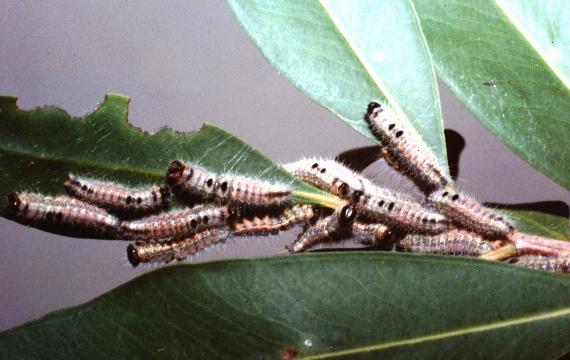
(Photo: Don Herbison-Evans, Bundaberg, Queensland)

| (previously known as : Teara protrahens) THAUMETOPOEINAE, NOTODONTIDAE, NOCTUOIDEA | (donherbisonevans@yahoo.com) and Stella Crossley |

(Photo: Don Herbison-Evans, Bundaberg, Queensland)
These Caterpillars are communal at first, living in a silken web on their food plant. They have been found on various plants from MYRTACEAE including:
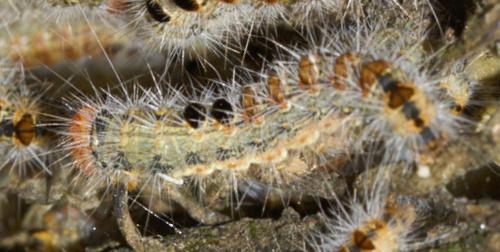
Later instars separate and feed in solitude. They are yellow and hairy, with a dorsal black spot on each of the first two and last three abdominal segments, and a short brown tussock on each abdominal segments. They have orange legs and a brown head.
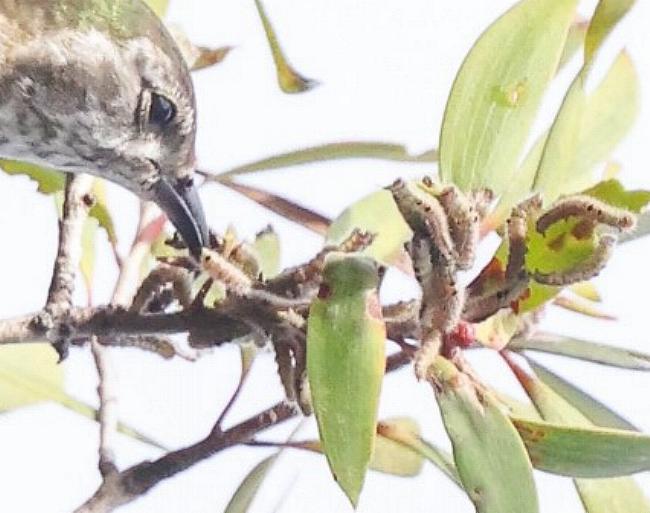
The caterpillars have been observed being predated by a Shining Bronze-Cuckoo, but most caterpillars escaped by dropping on silk threads.
The caterpillars become communal again at pupation time. They pupate in adjacent cocoons, between leaves of the food plant.

The adult moths have forewings that are dark brown speckled with silver flecks, with a large pale yellow spot near the centre, a broken yellow line along the termen and costa, and a subterminal row of cream spots.
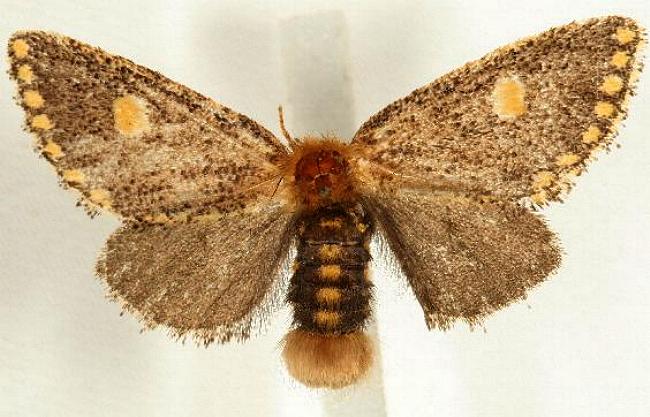
The moths have a wingspan of about 2.5 cms.
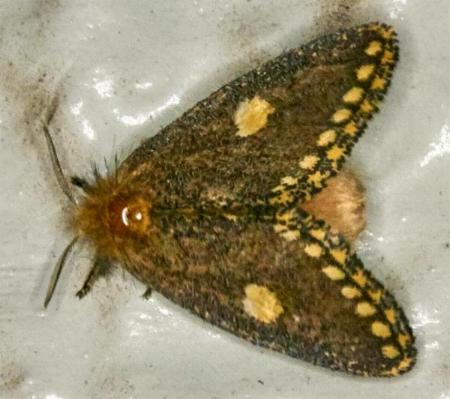
The species has been found in
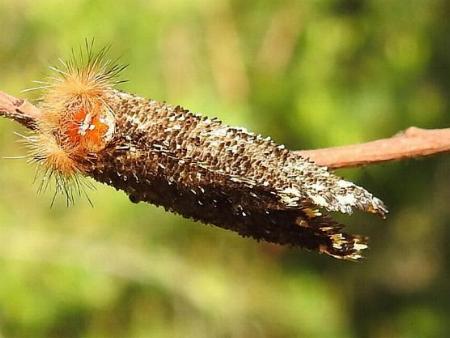
Further reading :
Thomas P. Lucas,
On Queensland and other Australian Macro-Lepidoptera,
with Localities and Descriptions of new Species,
Proceedings of the Linnean Society of New South Wales,
Series 2, Volume 4, Part 4 (1890), pp. 1090.
Buck Richardson,
Tropical Queensland Wildlife from Dusk to Dawn Science and Art,
LeapFrogOz, Kuranda, 2015, p. 179.
Paul Zborowski and Ted Edwards,
A Guide to Australian Moths,
CSIRO Publishing, 2007, p. 173.
 caterpillar |  butterflies |  Lepidoptera |  moths |  caterpillar |
(updated 3 January 2012, 4 June 2018, 21 March 2021)